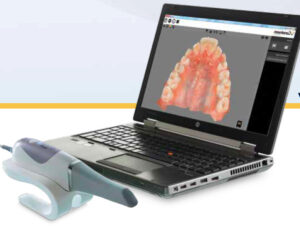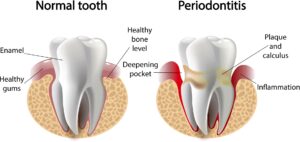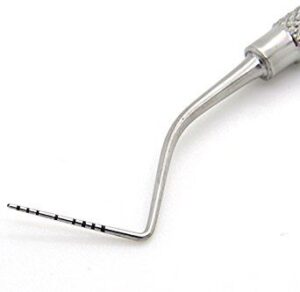Header logo
header top contact widget
Sore or swollen gums
Why You’re Losing Teeth (and how to halt the process)
Posted on Jul 29, 2021 by William J. Claiborne, DDS MS
The inevitable. Murphy’s law. Sooner or later.
It is to no surprise that life throws us occasional curves, some being out of the blue and others being somewhat predictable. As an Asheville Periodontal Specialist, one that comes to mind is the path to losing teeth.
Losing natural teeth is a challenge to both oral and overall health. And, there’s nothing that will definitively replace natural teeth once they’re extracted (although dental implants come pretty close!). Keeping natural teeth and gums healthy is the best way to support your health as you age.
According to a 2017 article published by Dentistry Today that shared recent study findings:
“people who had lost 5 or more teeth by the age of 65 years were more likely to suffer from cardiovascular disease, diabetes, and osteoporosis, all of which could severely limit life expectancy. Many of these illnesses previously have been linked to a person’s quality of life and socioeconomic status. The study concludes that the number of teeth in aging humans can affect longevity and life expectancy.”
https://www.dentistrytoday.com/news/industrynews/item/1632-life-expectancy-linked-to-number-of-teeth
Of course, no one wants to lose a natural tooth. Yet, many people assume that tooth loss is simply a natural part of the aging process. It’s not.
Through the years, certainly, accidents, injuries, decay, gum disease and deep fractures in teeth can result in loss of teeth. Regardless of how committed some people are to their oral hygiene regimen at home and regular dental check-ups, unexpected occurrences can lead to the need for an extraction.
However, the people who are committed to their oral health are far less likely to endure the undesirable outcome of tooth removal. The measures are simple and take very little time.
• Brush your teeth at least twice a day, for a minimum of two minutes each time.
• Floss daily.
• Avoid snacking and limit sugar.
• Drink plenty of water.
• See your dentist twice a year for exams and cleanings.
• Don’t smoke.
Although smoking cessation is a tough task for most people, the other items listed above require just minutes a day and cost very little. What they help you accomplish is PREVENTION. Rather than have problems treated, many instances surrounding tooth loss could have been prevented.
It is far less costly and time consuming to be attentive to your oral health than deal with the repercussions of insufficient oral upkeep. Losing a tooth will require a lifelong commitment, regardless of how it is replaced. And, replacing teeth is absolutely necessary.
When a tooth is lost, whether it can be seen in a smile or not, it no longer supports the surrounding teeth. The tooth above (or below) can elongate. Neighboring teeth can tilt or turn since they lack the bolstering affect provided by the now-missing tooth.
These factors can lead to chipped, fractured or broken teeth. They can also be an issue in bite misalignment. A misaligned bite can cause stress or strain on the temporomandibular joints (TMJ). The results can be frequent headaches, sore jaw joints, ear ringing, dizziness, and difficulty opening the mouth fully.
Another problem lies in the absence of the missing tooth’s roots. When these roots are missing, there is a lack of stimulation and nourishment to the jaw bone in this area. Without this, the bone begins to shrink, or resorb. Bone mass decline affects the stability of the adjacent teeth. It is known that the next tooth to be lost will most likely be one bordering a missing one.
The path to tooth loss, other than accident or injury, is actually a pretty predictable one. For people who take their oral hygiene lightly, it’s not a matter of “if” but “when”. Bacteria buildup in the mouth should be removed regularly, which is why twice-daily brushing is advised. If not thoroughly removed, their growth runs rampant.
Saliva flow helps in moving some bacteria out of the oral cavity. However, as people age, saliva flow decreases. Add to that the many elements that are drying to oral tissues: caffeine (including coffee, tea and colas), many medications, snoring, and some health conditions.
Oral bacteria that accumulate in the mouth for more than 48 hours first create a sticky film that coats the teeth and gums. This is plaque. If not removed through brushing and flossing, plaque transforms into hardened masses on the base of (or between) some teeth. This is tartar, which can no longer be brushed or flossed away.
As tartar spreads, the gums become inflamed. This causes gingivitis – the first stage of gum disease. Gingivitis causes the gums to become tender, swell, and sometimes bleed when brushing. Breath odor can become frequently bad.
If not resolved quickly, gingivitis can progress into full-blown gum disease. At this stage, the gums are red, inflamed, tender, bleed easily and breath odor is bad, even shortly after brushing.
As gum disease worsens, gums loosen their strong seal around the base of teeth. This allows entry of these infectious bacteria below the gum line. The structures that support natural teeth (including bone) are attacked, which can cause some teeth to loosen.
The advanced stage of gum disease is periodontitis. This means that gum tissues are red, spongy, have pockets of pus, bleed even when eating, and breath odor is putrid. To add insult to injury, this devastation doesn’t remain only in the mouth. Through tears in diseased gum tissues, the inflammatory bacteria of gum disease can enter the bloodstream.
This bacteria has been linked to serious, even life-threatening, health problems, as severe as stroke, heart disease, some cancers and Alzheimer’s disease. It can cause inflammatory triggers that worsen diabetes and prostatitis and cause preterm births.
Obviously, it’s important to keep your teeth and gums healthy. And, if tooth loss does occur, consider replacing it/them with dental implants. As an Asheville periodontist, one of my areas of advanced skill is in dental implant diagnosis and placement.
Dental implants are the closest thing to the look, feel and function of natural teeth. They restore dependable biting and chewing, without the need to be removed for cleaning. Best of all, confidence in smiling and laughing returns.
We frequently see Western NC adults who feared they would lose teeth due to periodontal disease and/or had already lost one or more natural teeth. Through our advanced skills and computerized technology, we are often able to fully restore people to excellent oral health and halt the progression of tooth loss.
If you have avoided seeing a dentist because of fear or anxiety, please know that we provide our patients with an environment of respect and comfort. We offer I.V. sedation (‘twilight sleep’) as well as oral sedation to create a totally relaxed state throughout treatment.
If cost is a concern, we also have payment plans that can help you achieve the smile you desire while making monthly payments that fit your budget.
Why allow tooth loss to happen? It CAN and SHOULD be prevented and we can help you regardless of your current oral condition. Call 828-274-9440 to request a consultation appointment. This will take place in a private consultation room where your questions will be answered thoroughly.
Keep The Mouth Moist To Minimize Bacterial Growth
Posted on Jul 22, 2021 by William J. Claiborne, DDS MS
When you think of an environment of a warm, dark, moist space, it would seem to be a perfect breeding ground for bacteria growth. For homeowners, the worry over this is often how easily mold forms in such places.
According to FEMA (Federal Emergency Management Agency), molds are microscopic organisms that thrive anywhere there is a moist environment. Growth can start on a damp surface within 24 to 48 hours.
Molds digest organic material, eventually destroying the material they grow on, and then spread to destroy adjacent organic material. (https://www.fema.gov/pdf/rebuild/recover/fema_mold_brochure_english.pdf)
As an Asheville periodontist, I can’t help but think of the similarities to the mouth. Bacteria in the mouth, when not removed, can multiply and form the sticky film that coats teeth and gums. This is known as plaque.
Like molds, plaque must to be removed to prevent its spread and destructive nature. This is what your twice-daily brushing and flossing regimen is intended to do. When plaque remains in the mouth for roughly 48 hours, it hardens onto teeth. This is tartar and typically forms between teeth or in chunks at the base of teeth.
Essentially, tartar is a hardened mass of bacteria. Like mold, tartar continues to grow if not removed. And, like mold, tartar can cause damage to what it is growing on and spread to surrounding structures.
In addition to a brushing and flossing routine, the mouth has a particular advantage in its ability to control bacteria growth. Saliva is a continual rinsing agent that moves bacteria out of the mouth before the reproductive ability begins or accumulation runs rampant.
However, a dry mouth, which can be the result of a number of factors, means saliva is operating at quite a disadvantage to oral health.
Oral dryness is a natural part of the aging process. It affects about one in five older adults. A dry mouth can also occur from:
• As a side effect of many medications (including prescription and OTC)
• Radiation therapy, especially for head and neck cancer
• Mouth-breathing, which may be due to nasal congestion or snoring
• Medical conditions, such as diabetes, Alzheimer’s disease, stroke and Sjogren’s syndrome
Mold has an odor. So does oral dryness, which reveals itself through bad breath.
Just as mold can destroy things like drywall, carpets and insulation, an overload of bacteria in the mouth can be destructive to teeth and gums. These living and breeding organisms thrive on gum tissues. 
Although saliva is an aid in bacteria control, there is a limit to what the flow is able to manage. When oral bacteria reach a certain level, they cause inflammation in oral tissues. The early stage of this, known as gingivitis, causes the gum to become tender and swollen. When brushing, blood may be present in the sink when rinsing.
Gingivitis, at this stage, can be contained and resolved if quickly addressed. If not, the bacteria will continue to multiply. This creates inflammation in the gums. This means the inflammation has progressed to periodontal disease, which requires treatment since it is now below the gum line.
Beneath the gum line, the bacteria continue their attack on the structures that support natural teeth. This includes the bone structures surrounding tooth roots. At this point, the gums bleed easily and breath odor is persistently bad. The gums become red and swollen and may pull away from the base of some teeth (gum recession).
Resolving gum disease at this point requires a procedure known as scaling & root planing. This allows the dental professional to reach below the gum’s surface to remove the bacteria. More extensive than a dental cleaning, the gum tissues are numbed and the process may require more than one visit to complete.
If the disease is not treated, it will reach the stage of periodontitis. This is an advanced stage of gum disease that is highly infectious and destructive. Because it leaves the gum tissues in such a weakened state, the infection can easily penetrate beyond the gums and enter the bloodstream.
Symptoms of periodontitis are very uncomfortable. Gums turn spongy and breath odor is putrid. Pus pockets appear on the gums and it may become painful to eat. Some teeth may loosen and eventually need removal.
This is where the damage of periodontal disease bacteria becomes even more destructive. As bad as tooth loss is, hold onto your hat…
Because these bacteria can trigger inflammatory reactions elsewhere in the body, researchers have linked them to a wide range of serious health problems.
The bacteria of gum disease have been correlated to heart disease, stroke, some cancers, diabetes, arthritis, and preterm babies. This is rather telling as to the potency of this harmful bacteria and the destructive nature.
When mold in a house that began in one spot is ignored, the destruction spreads. That’s a pretty good reason to tend to the problem before it gets out of hand, right? Proper care for oral health is worth the minor investment of time and money to avoid the destruction that can occur, including keeping the mouth moist to support sufficient saliva flow.
Here are a few pointers to help you maintain oral moisture:
• Keep the mouth moist by drinking plenty of water throughout the day. Watch your limit of caffeine, including coffee, tea and colas.
• If you take medications that have a side effect of oral dryness, ask your doctor about options that may be less drying to the mouth. Or, increase your water intake and use a daily rinse to replenish oral moisture.
• If you snore or breath through your mouth during sleep, talk to your doctor about ways to resolve these problems. It may be as easy as adjusting your sleeping position or adding a side pillow. Or, an oral appliance may be advised.
• When medical conditions (acid reflux, sinus infections, diabetes, bronchitis) contribute to a dry mouth, be especially committed to your oral hygiene routine at home (brushing and flossing) and up your water intake.
• Know that alcohol (including beer and wine) are drying to oral tissues. Try to swish with water between drinks or have a glass of water nearby to periodically dilute the drying impact.
• Smoking (cigarettes, cigars, vaping) delivers toxic chemicals into the mouth, with the gums taking the first brunt. Be aware of this added risk to the drying effects and take added measures to keep your mouth clean and moist.
I hope you never need the specialty care of a periodontist. However, should you find yourself in need of our care, we place a priority on comfort and ensure a respectful, compassionate approach to each individual.
In our Asheville periodontal office, we provide sedation (“twilight sleep”) for patients during many procedures, if desired. Our office also features some of the most advanced technology available in dentistry, including cone beam imaging, laser dentistry, and computerized guidance for dental implants and other procedures.
Begin with a consultation appointment by calling (828) 274-9440. New patients are always welcome and a referral is not always needed.
Arthritis? Recommit Yourself To Having Good Oral Health.
Posted on Jun 20, 2021 by William J. Claiborne, DDS MS
According to the Centers For Disease Control & Prevention (CDC), over 47 percent of American adults are living with some level of gum disease. For those age 65 and older, this figure jumps to 70 percent.
These concerning statistics are nothing to ignore. Although gum disease is so common, it increases risks that go far beyond the mouth. Over the years, research has tracked many diseases and conditions that correlate with gum disease bacteria. The inflammatory reactions triggered by these infectious bacteria have been linked to heart disease, stroke, some cancers, diabetes, preterm babies, and impotency.
Research has also shown a notably close relationship between gum disease and rheumatoid arthritis (RA). These studies have been ongoing for many years, and the findings should be concerning to all adults.
RA is a debilitating, painful disease that destroys joints. RA often emerges gradually, initially causing morning stiffness and weak, sore muscles. As inflammation from RA worsens, joints become swollen. Joints become achy and stiff most often in the fingers, wrists, elbows, hips, knees, ankles, toes and neck. Unfortunately, there is no cure for RA.
On a positive note, studies have shown that treating RA patients who have periodontal disease helps to improve RA symptoms. It is felt that this occurs because of a lighter burden of oral inflammation to the body’s immune system.
Below are some of the findings you may want to review. First, however, it’s important to understand how gum disease begins and some signs and symptoms.
In the initial stage of periodontal (gum) disease, known as gingivitis, the gums may bleed when brushing. Bad breath is more frequent and the gums may be tender or swollen. As the disease progresses, the gums turn red and may pull away from the base of some teeth.
Bad breath becomes persistent and pus pockets may form at the base of some teeth. As the infectious bacteria attack the bone structures that support tooth roots, teeth will begin to loosen and may need removal. Gum disease is the leading cause of adult tooth loss in the U.S.
In addition to the devastating damage in the mouth, the infectious bacteria of gum disease can enter the bloodstream through diseased gum tissues, causing the inflammatory triggers that activate serious health problems, such as RA.
Years ago, researchers noticed an RA-perio trait among people with rheumatoid arthritis. While RA sufferers had gum disease more often, they observed that people with gum disease tended to have RA more often.
As researchers delved deeper into the connection, it appeared that the association is much more complicated than previously thought. Findings now suggest that oral bacteria could actually be a cause of rheumatoid arthritis.
In the past, doctors felt that periodontal disease was a result of RA itself since stiff, painful hands make it challenging to maintain good oral hygiene. They also suspected that medications prescribed to treat RA could be a factor since the drugs, which suppress the immune system, inhibited the body’s ability to fight harmful oral bacteria.
Both conditions cause chronic inflammation in tissues that connect to bone with both diseases having a similar inflammatory trigger. Even more similar is the particular species of bacteria found in periodontally-diseased tissues when compared with tissues around arthritic joints. In one study, a particular pathogen associated with periodontal disease was found to activate the same destructive process of rheumatoid arthritis.
In 2017, study findings were released by Johns Hopkins University Division of Rheumatology, which noted evidence that the tissues in the mouth of a periodontally-compromised individual and the tissues of the joint in RA have a number of likenesses. Research has also shown a genetic link between the two.
Above all, these findings reinforce how oral health correlates closely to our overall health. When you consider how the presence of gum disease can significantly increase your risk for serious health conditions, having good oral health should be a priority for every American.
What can you do to lower your risks for tooth loss and contributing to (or worsening) serious health problems? Recommit yourself to thorough oral hygiene at home and having twice-a-year exams and cleanings.
If you have signs of gum disease, have treatment at your earliest convenience. Gum disease will only worsen and requires more treatment time and expense as it progresses.
Call 828-274-9440 to schedule an examination, or begin with a consultation to discuss your needs.
https://www.hopkinsrheumatology.org/2017/01/gum-disease-linked-to-rheumatoid-arthritis/
https://www.cdc.gov/oralhealth/conditions/periodontal-disease.html
https://pubmed.ncbi.nlm.nih.gov/17551378/
Oral Bacteria Can Put An Immune System At A Disadvantage
Posted on May 20, 2021 by William J. Claiborne, DDS MS
Long before the COVID pandemic, it was widely known in the medical/dental and scientific communities that the bacteria in the mouth was intricately connected to the body’s overall health.
The oral cavity (interior of the mouth) contains some of the most varied and vast flora in the human body. It is the entryway for two systems vital to human function and physiology, the gastrointestinal and respiratory systems. Therefore, specific infections in the oral cavity may contribute to infection that can affect systemic health.
Systemic health refers to issues that affect the entire body, rather than a single organ or body part. An example of a systemic disorder is high blood pressure, which affects the body as a whole.
Research demonstrates that inflammation is a likely trigger for the systemic connection. For this reason, researchers have studied inflammation in the oral tissues caused by periodontal (gum) disease as a contributing factor of continual inflammation in the body.
 Hundreds of diseases and medications impact the oral cavity. Although the precise point of activation remains to be determined with some health problems, there is a more obvious association between oral bacteria and certain conditions.
Hundreds of diseases and medications impact the oral cavity. Although the precise point of activation remains to be determined with some health problems, there is a more obvious association between oral bacteria and certain conditions.
For instance, diabetes has a clear relationship with periodontal disease. Strong evidence shows that treating one condition positively impacts the other. By the same token, uncontrolled inflammation levels of one can worsen inflammation levels in the other.
Therefore, treating inflammation may not only help manage periodontal diseases but may also help manage other chronic inflammatory conditions.
Oral bacteria has been found to trigger or worsen other systemic conditions, including atherosclerotic vascular (heart) disease, pulmonary (respiratory) disease, diabetes, pregnancy-related complications, osteoporosis (bone loss), and kidney disease. A shared trait between gum disease and these medical conditions is that they are chronic conditions that take a long time to develop.
https://www.agd.org/docs/default-source/self-instruction-(gendent)/gendent_nd17_aafp_kane.pdf
According to the Centers of Disease Control & Prevention (CDC), nearly half of American adults ages 30 and over have gum disease – a whopping 47 percent. In a recent study, they found that about 9 percent have mild levels of gum disease, 30 percent have moderate levels and 8.5 percent have severe gum disease (periodontitis).
Researchers of a recent study found that 64 percent of adults ages 65 and older had either moderate or severe periodontitis. Gum disease rates were highest in males, Mexican Americans, adults with less than a high school education, adults below the poverty line and current smokers.
Although the initial stages of gum disease may be concealed behind the lips and cheeks, the interior of the mouth can signal the presence of periodontal disease at nearly every stage. For example, sore and swollen areas can indicate gingivitis, an early form of gum disease.
Worsening levels of gum disease can cause redness, tenderness, bad breath, bleeding when brushing, and receding gums. Progressive gum disease can lead to persistent bad breath, pus pockets forming around teeth, loosening teeth and painful chewing.
In your regular dental check-ups, your dental hygienist uses a “probe” to measure “pockets” along the base of teeth. During the exam, he or she measures the gum depth along each tooth – front, back and in-between. These depth measurements indicate areas where gum tissues have loosened from the base of teeth, and to what extent. The higher the number, the deeper the pocket.
 For example, healthy gums will measure 1 or 2. In some areas that are harder to reach when brushing or flossing, a 3 may be measured. However, a 4 or higher number indicates the gums are loosening their protective grip from the tooth. This leaves the tooth at risk for bacterial penetration below the gums.
For example, healthy gums will measure 1 or 2. In some areas that are harder to reach when brushing or flossing, a 3 may be measured. However, a 4 or higher number indicates the gums are loosening their protective grip from the tooth. This leaves the tooth at risk for bacterial penetration below the gums.
Healthy gums wrap snugly around the base of each tooth. This prevents the entry of bacteria, which can cause damage to the tissues and bone structures supporting tooth roots. Gum disease, to no surprise, is the nation’s leading cause of adult tooth loss.
However, infectious bacteria of gum disease don’t necessarily remain confined to the mouth. Through tears in diseased gum tissues, the bacteria are able to enter the bloodstream. Traveling through the body, these potent organisms can trigger reactions that activate or worsen serious health conditions.
For example, studies have indicated a relationship between periodontal disease and stroke. In one study focused on oral infection as a risk factor for stroke, people diagnosed with acute cerebrovascular ischemia showed a higher likelihood for having an oral infection than those who had healthy gums. (https://www.perio.org/consumer/gum-disease-and-heart-disease)
Along similar lines, men with gum disease have been found to be 49 percent more likely to develop kidney cancer, 54 percent more likely to develop pancreatic cancer, and 30 percent more likely to develop blood cancers.
Having healthy gums is actually easy – and rather inexpensive. Adults should brush thoroughly (at least 2 minutes) twice a day and floss daily. Snacking and sugar should be limited. The mouth should be kept moist throughout the day by drinking plenty of water (coffee, colas and tea doesn’t count). Moisture can also be replenished by the use of specially formulated oral rinses (available over-the-counter at many drug stores). By all means, drink alcohol moderately and avoid smoking.
Additionally, adults should maintain their 6-month dental check-ups and cleanings. These appointments help to remove any build-up of plaque or tartar on teeth so they are easier to maintain between visits. Too, your hygienist can point out areas of risk so you can concentrate appropriately during your at-home oral hygiene regimen.
If you’ve delayed (or avoided) regular dental care, your likelihood of having some level of gum disease is pretty high, even though you may not have obvious symptoms in early stages. Gum disease, once underway, does not go away on its own. It will gradually worsen and become a source of infectious bacteria that strains your immune system and increases your risks for serious health problems.
Begin with an examination appointment by calling our beautiful Asheville periodontal dental office at 828-274-9440. Here, we treat our patients with compassion, respect and with comfort a priority at all times. And, we provide patients with decades of experience and advanced skills — along with exceptional dental technology – so your treatment is successful and performed efficiently and effectively in minimal time.
While your smile is greatly important to your appearance, it’s what you can’t see that may harbor a rather ugly presence. Let’s get your smile in great shape!
Recent Posts
Categories
Archives
- September 2024
- August 2024
- July 2024
- June 2024
- May 2024
- April 2024
- March 2024
- February 2024
- January 2024
- December 2023
- November 2023
- October 2023
- September 2023
- August 2023
- July 2023
- June 2023
- May 2023
- April 2023
- March 2023
- February 2023
- January 2023
- December 2022
- November 2022
- October 2022
- September 2022
- August 2022
- July 2022
- June 2022
- May 2022
- April 2022
- March 2022
- February 2022
- January 2022
- December 2021
- November 2021
- October 2021
- September 2021
- August 2021
- July 2021
- June 2021
- May 2021
- April 2021
- March 2021
- February 2021
- January 2021
- December 2020
- November 2020
- October 2020
- September 2020
- August 2020
- July 2020
- June 2020
- May 2020
- April 2020
- March 2020
- February 2020
- January 2020
- December 2019
- November 2019
- October 2019
- September 2019
- August 2019
- July 2019
- June 2019
- May 2019
- April 2019
- March 2019
- February 2019
- January 2019
- December 2018
- November 2018
- October 2018
- September 2018
- August 2018
- July 2018
- June 2018
- May 2018
- April 2018
- March 2018
- February 2018
- January 2018
- December 2017
- November 2017
- October 2017
- September 2017
- August 2017
- July 2017
- June 2017
- May 2017
- April 2017
- March 2017
- February 2017
- January 2017
- December 2016
- November 2016
- October 2016
- September 2016
- August 2016
- July 2016
- June 2016
- May 2016
- April 2016
- March 2016
- February 2016
- January 2016
- December 2015
- November 2015
- October 2015
- September 2015
- August 2015
- July 2015
- June 2015
- May 2015
- April 2015
- March 2015
- February 2015
- January 2015
- December 2014
- November 2014
- October 2014
- September 2014
- August 2014
- July 2014
- June 2014
- May 2014
- April 2014
- March 2014
- February 2014
- January 2014
- December 2013
- November 2013
- October 2013
- September 2013
- August 2013
- July 2013
- June 2013
- May 2013
- April 2013
- March 2013
- February 2013
- January 2013
- December 2012
- November 2012
- October 2012
- September 2012
- August 2012
- July 2012
- June 2012


